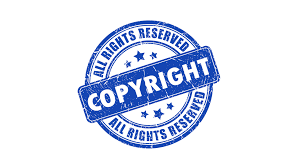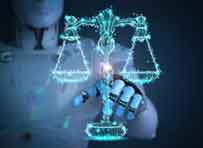Intellectual Property Rights Case Study On: The Chancellor, Masters And Scholars Of The University Of Oxford v/s Rameshwari Photocopy Services
The Chancellor, Masters & Scholars of the University of Oxford & Ors v. Rameshwari Photocopy Services & Anr, often known as the DU photocopy case, is
regarded as one of the most significant rulings in the area of copyright law. In
the present case, the university and a small photocopy shop located on the
campus of one of Delhi University's colleges were sued by the leading publishers
for violating their copyright in books that the defendants were photocopying and
compiling into course packs for students.
The Chancellor, Ma'sters & Scholars of the University of Oxford and Ors. v/s. Rameshwari Photocopy Services and Ors.
Citation: (2016) 16 DRJ (SN) 678
Court: High Court of Delhi
Single Bench: Justice Rajiv Sahai Endlaw
Division Bench: Hon'ble Mr. Justice Pradeep Nandralog and Hon'ble Mr. Justice Yogesh Khanna
Introduction
Since the invention of the copier machine in 1954, photocopying has been easier and less expensive, making copies readily available to everyone. However, intellectual property rights are viewed as a "double-barreled" right since they safeguard people's motivation to produce works of art or invention while also enabling those works to advance society without compromising the level of protection.
Regulations created under copyright law strike a compromise between the author's entitlement to protection and the demands of society as a whole. Thus, the right to access is constrained by limitations or exceptions provided along it, and protection is managed by the direct application of copyright laws.
The notion of fair dealing is then developed to keep both areas of copyright under control. The legal exception to protection known as "fair use" or "dealing" enables the economic benefit of copyright. It permits the copyrighted work to be used or reproduced without violating the author's rights.[1]
Typically, the copyright owner is the author, producer, or creator, or in the case of works produced under an employment contract, their employer..
According to the Berne Convention, a copyright exception or limitation is only permitted if it:
In this particular case, sections 52(1) (h) and 52(1) (i) are the main points of emphasis laid out.
Section 52(1) (h)
Publishers can include short passages from copyrighted literary or dramatic works in a collection primarily consisting of non-copyrighted material, specifically intended for educational purposes. This purpose must be clearly stated in the title and any promotional materials released by the publisher. It should be noted that the published passages themselves should not have been previously published for instructional use. Additionally, a publisher may not include more than two passages from works by the same author within a five-year timeframe.
Section 52(1) (i) prohibits the duplication of any work when it is done
The plaintiffs claimed that the incorporation of particular passages from their works into these "course packs" constituted copyright infringement:
Argument Advanced Of The Defence:
Issues:
A bird's eye view would reveal that there are only two issues involved. That is:
Jugement
The court's ruling made it clear that the plaintiffs are not in competition with 'course packs' or compilations because, even in the absence of 'course packs', students could still check out free books from the library. In the end, the "course packs" don't pose any further competition for the books.
The court held that the goal of copyright infringement should come first. The doctrine of fair use covers the creation of course packs if doing so aids in research and educational endeavours.
The price of actual books was significantly greater than the price of compilations.
Fairness of use is evaluated qualitatively rather than quantitatively. The university only gave out course packets to students who had identity cards and to no one else, and it forbade profits of more than 2 pence per page.
The court next turned to Section 52(1) (i), which was the case's central contention. It was decided that the plural form of the verb "reproduction," which implies "making a copy of," was also included. The plural forms of the words "teacher" and "pupil" were also included.
The court proceeded to provide a definition for the term "in the course of teaching." According to their interpretation, this phrase encompasses the entire process or program spanning the duration of a semester, rather than solely referring to activities conducted within the classroom. In the context of Section 21(4) of the New Zealand Copyright Act of 1962, the words "in the course of instruction" were understood to include any instructional activities that commence prior to and extend beyond the formal time of instruction, particularly from the perspective of the teacher.
The court also referenced the decision in "Longman Group Ltd. v. Carrington Technical Institute Board of Governors" [(1991) 2 NZLR 574] from the High Court of New Zealand. As long as the copying is directly connected to and arises from the process of instruction, it is typically deemed to occur during instruction.
Following the court's denial of interim injunction to the publishers, the Rameshwari Photocopy Service Shop was instructed to maintain records of photocopies associated with the "course packs" and submit them periodically every six months as part of the ongoing lawsuit.
The court decided it doesn't matter whether the pupils photocopy the books themselves or the store does it beforehand. In addition, Justice Endlaw believed that if the student went alone, it would take about a day to photocopy this many books. Therefore, it's preferable if they already have them spiralled and photocopied.[6]
Conclusion
The aforementioned case law is illustration of the exceptions to copyright infringement, particularly when they relate to situations involving educational and research reasons. It also demonstrates that definitions and explanations can be introduced in order to safeguard those in need because the legal system doesn't always follow the rules. The case demonstrates the absolute necessity of the right to an education and the need for institutions that work to reduce educational costs to be supported and protected.
Rather than focusing on quantity, fair usage must take into account reproduction quality. Only students with university I cards were given "course packs" by the institute in this case.
The primary plaintiffs abandoned their action from the Delhi High Court because they believed it was pointless to compete with their institutions' stakeholders. Additionally, the Indian Reprographic Rights Association (IRRO) appealed the ruling to the Supreme Court. Given that the publisher plaintiffs (OUP, etc.) withdrew their original lawsuit from the Delhi high court and that the IRRO was only a party to the lower court's proceedings as an intervenor, the Supreme Court chose not to challenge the High court's ruling.
Hence, the Copyright Act of 1957 establishes a new precedent in light of this case.
In order to balance the interests of authors, curators, and publishers with those of people who require access to the educational works, copyright law is essential. This case and its resolution aided students who were unable to acquire books in ensuring that knowledge was distributed fairly among students and that their education was of a high standard. A developing country like India unquestionably needs ongoing support and persistent attempts to boost its educational standards in order to encourage students to aim higher.
In a same vein, the publishing house, or any other body, for that matter, shall never place any limitations on the use of books for study and societal progress. The significance of fair use and the value of research in the modern world have been reaffirmed by the current case. Despite the fact that this violates copyright laws, the benefit to society or the individual who cannot afford those books for research purposes cannot be discounted under any circumstances.
End-Notes:
The Chancellor, Ma'sters & Scholars of the University of Oxford and Ors. v/s. Rameshwari Photocopy Services and Ors.
Citation: (2016) 16 DRJ (SN) 678
Court: High Court of Delhi
Single Bench: Justice Rajiv Sahai Endlaw
Division Bench: Hon'ble Mr. Justice Pradeep Nandralog and Hon'ble Mr. Justice Yogesh Khanna
Introduction
Since the invention of the copier machine in 1954, photocopying has been easier and less expensive, making copies readily available to everyone. However, intellectual property rights are viewed as a "double-barreled" right since they safeguard people's motivation to produce works of art or invention while also enabling those works to advance society without compromising the level of protection.
Regulations created under copyright law strike a compromise between the author's entitlement to protection and the demands of society as a whole. Thus, the right to access is constrained by limitations or exceptions provided along it, and protection is managed by the direct application of copyright laws.
The notion of fair dealing is then developed to keep both areas of copyright under control. The legal exception to protection known as "fair use" or "dealing" enables the economic benefit of copyright. It permits the copyrighted work to be used or reproduced without violating the author's rights.[1]
Copyright Law of India
"The Copyright Act of 1957, as amended by the Copyright Amendment Act of 2012, grants rights to authors of literary, dramatic, musical, and artistic works, as well as creators of cinematic films and sound recordings. These rights include reproduction, communication, modification, and translation of the works. These rights are different from other rights, such as the right to equality or freedom, and can be described as negative rights that prohibit others from reproducing, communicating, adapting, or translating the works. Copyright infringement occurs when these works are used unfairly."Copyright Infringement
Unauthorized use of works protected by copyright laws constitutes copyright infringement and infringes upon specific rights exclusively granted to the copyright owner. These rights encompass reproduction, communication, adaptation, and translation.Typically, the copyright owner is the author, producer, or creator, or in the case of works produced under an employment contract, their employer..
Exceptions to Copyright Infringement
To advance the public interest, some intellectual property may be granted. This is carried out to encourage study and research in that area. Some writings have the potential to educate millions of people.According to the Berne Convention, a copyright exception or limitation is only permitted if it:
- It covers unique instances
- It does not unfairly damage the author's legitimate interests
- It does not interfere with the usual utilisation of the work.
In this particular case, sections 52(1) (h) and 52(1) (i) are the main points of emphasis laid out.
Section 52(1) (h)
Publishers can include short passages from copyrighted literary or dramatic works in a collection primarily consisting of non-copyrighted material, specifically intended for educational purposes. This purpose must be clearly stated in the title and any promotional materials released by the publisher. It should be noted that the published passages themselves should not have been previously published for instructional use. Additionally, a publisher may not include more than two passages from works by the same author within a five-year timeframe.
Section 52(1) (i) prohibits the duplication of any work when it is done
- by a teacher or a student during a lesson,
- as part of a question on an exam, or
- in responses to such questions;[3]
What do you mean by Fair Use under the Indian Copyright Act?
The Copyright Act of 1957 in India provides provisions for acts or works that do not amount to copyright infringement. Section 52 of the Act stipulates that fair dealing with literary, dramatic, musical, or artistic works (excluding computer programs) is encompassed within this category:- The act of fair dealing, applied to any work other than computer programs, with the intention of serving a specific purpose�
- Fair dealing for private or personal use, including research purposes;
- Fair dealing for the purposes of criticism or review, whether directed towards the specific work in question or any other work;
- Fair dealing encompasses the reporting of present events and matters of public interest, which includes reporting on a publicly delivered lecture.
- Fair dealing covers the temporary or unintentional storage of a work or performance solely during the technical process of electronically transmitting or communicating it to the public.
- "The temporary or unintentional storage of a work or performance, with the intent of facilitating electronic links, access, or integration, is permissible unless expressly prohibited by the rights holder. However, if the responsible person is aware or reasonably believes that such storage involves an infringing copy, it is not allowed."
- The copying of any work with the intention of using it in a legal proceeding or for the purpose of reporting on a legal proceeding.;[4]
- Rameshwari Photocopy Services is a store on the Delhi School of Economics (Delhi University) campus that has been granted permission by the university to support research and instruction.
- The shop had been given permission by the DSE professors to create "course packs" using the Plaintiffs' published books.
- The average book costs Rs. 2542, and 8.81% of the total books are copied.
- The lecturers also gave the store owners instructions to charge 50p per page for these course materials.
- Subsequently, in 2012, the respondents brought a lawsuit against the Rameshwari Photocopy Service Shop and the Delhi School of Economics (Delhi University) alleging that their intellectual property had been violated.
- "Despite the withdrawal of the primary plaintiffs, the Indian Reprographic Rights Association (IRRO) tried to petition the Supreme Court, seeking to challenge the decision rendered by the Division Bench of the Delhi High Court on December 9, 2016."
- The Supreme Court refused to review this appeal because of the High Court's ruling.
The plaintiffs claimed that the incorporation of particular passages from their works into these "course packs" constituted copyright infringement:
- According to the plaintiffs, the Rameshwari Photocopy Service Shop allegedly received books from professors at Delhi School of Economics through the library.
- Furthermore, they claimed that the enterprise was lucrative due to its pricing of 50p per page, which was higher compared to the 20�25p per page charged by other photocopying businesses.
- They continued by saying that "course packs" or compilations have gained market share because students won't buy the genuine books because they are expensive and won't find the books to be as useful.
- The plaintiffs claimed that the copy was not "a reproduction by a teacher or pupil in the course of instruction" under the law.
- In addition, they argued that section 52(1) (h) would be rendered meaningless if the reproduction were taken into account under section 52(1) (i), hence they requested the court to combine these two paragraphs.
- They further emphasised that because so many portions were reproduced, it was against section 52(1) (h), which only permits duplicating two passages from a single author's work.[5]
Argument Advanced Of The Defence:
- The Rameshwari Photocopy Service Shop argued that the copies they made complied with fair usage as defined by Sections 52(1) (a) and (h).
- "They further argued that the nominal prices set forth in the Licence Deed between the Delhi School of Economics and the Rameshwari Photocopy Service Shop applied to the course packs."
- The students couldn't buy all the books specified in the syllabus created by the Delhi School of Economics, they claimed, thus that was the reason.
- "In addition, the Delhi School of Economics claimed that Section 52(1) (i) allowed university staff members and students to reproduce entire works or portions of them for scholarly and instructional reasons."
- The phrase "reproduction" contained in Section 52(1) (i) did not place any restrictions on the number of copies that educational institutions could make. Only Section 52(1) (h) imposes restrictions, allowing only two paragraphs to be copied.
- In addition, the terms "reproduction" and "publication" employed in Section 52(1) (i) and (h), respectively, are entirely different. In Section 3, "publication" is defined as "making a work public," where "public" has a much broader meaning than "students."
Issues:
A bird's eye view would reveal that there are only two issues involved. That is:
- Whether copying was permissible under the Copyright Act?
- Whether such copying amounts to fair use under the provisions of the Copyright Act?
Jugement
The court's ruling made it clear that the plaintiffs are not in competition with 'course packs' or compilations because, even in the absence of 'course packs', students could still check out free books from the library. In the end, the "course packs" don't pose any further competition for the books.
The court held that the goal of copyright infringement should come first. The doctrine of fair use covers the creation of course packs if doing so aids in research and educational endeavours.
The price of actual books was significantly greater than the price of compilations.
Fairness of use is evaluated qualitatively rather than quantitatively. The university only gave out course packets to students who had identity cards and to no one else, and it forbade profits of more than 2 pence per page.
The court next turned to Section 52(1) (i), which was the case's central contention. It was decided that the plural form of the verb "reproduction," which implies "making a copy of," was also included. The plural forms of the words "teacher" and "pupil" were also included.
The court proceeded to provide a definition for the term "in the course of teaching." According to their interpretation, this phrase encompasses the entire process or program spanning the duration of a semester, rather than solely referring to activities conducted within the classroom. In the context of Section 21(4) of the New Zealand Copyright Act of 1962, the words "in the course of instruction" were understood to include any instructional activities that commence prior to and extend beyond the formal time of instruction, particularly from the perspective of the teacher.
The court also referenced the decision in "Longman Group Ltd. v. Carrington Technical Institute Board of Governors" [(1991) 2 NZLR 574] from the High Court of New Zealand. As long as the copying is directly connected to and arises from the process of instruction, it is typically deemed to occur during instruction.
Following the court's denial of interim injunction to the publishers, the Rameshwari Photocopy Service Shop was instructed to maintain records of photocopies associated with the "course packs" and submit them periodically every six months as part of the ongoing lawsuit.
The court decided it doesn't matter whether the pupils photocopy the books themselves or the store does it beforehand. In addition, Justice Endlaw believed that if the student went alone, it would take about a day to photocopy this many books. Therefore, it's preferable if they already have them spiralled and photocopied.[6]
Conclusion
The aforementioned case law is illustration of the exceptions to copyright infringement, particularly when they relate to situations involving educational and research reasons. It also demonstrates that definitions and explanations can be introduced in order to safeguard those in need because the legal system doesn't always follow the rules. The case demonstrates the absolute necessity of the right to an education and the need for institutions that work to reduce educational costs to be supported and protected.
Rather than focusing on quantity, fair usage must take into account reproduction quality. Only students with university I cards were given "course packs" by the institute in this case.
The primary plaintiffs abandoned their action from the Delhi High Court because they believed it was pointless to compete with their institutions' stakeholders. Additionally, the Indian Reprographic Rights Association (IRRO) appealed the ruling to the Supreme Court. Given that the publisher plaintiffs (OUP, etc.) withdrew their original lawsuit from the Delhi high court and that the IRRO was only a party to the lower court's proceedings as an intervenor, the Supreme Court chose not to challenge the High court's ruling.
Hence, the Copyright Act of 1957 establishes a new precedent in light of this case.
In order to balance the interests of authors, curators, and publishers with those of people who require access to the educational works, copyright law is essential. This case and its resolution aided students who were unable to acquire books in ensuring that knowledge was distributed fairly among students and that their education was of a high standard. A developing country like India unquestionably needs ongoing support and persistent attempts to boost its educational standards in order to encourage students to aim higher.
In a same vein, the publishing house, or any other body, for that matter, shall never place any limitations on the use of books for study and societal progress. The significance of fair use and the value of research in the modern world have been reaffirmed by the current case. Despite the fact that this violates copyright laws, the benefit to society or the individual who cannot afford those books for research purposes cannot be discounted under any circumstances.
End-Notes:
- "Fair Dealing: A Right or an Exception - An Analysis of Threshold of Fair Dealing through DU Photocopy Case" by Samreen Ahmed. Available at: https://legalserviceindia.com. Last visited on: 10 June 2023
- "Copyright Act, 1957 Section 52 (14 of 1957) {21 January 1958}"
- "A Case Study On: "The Chancellor, Masters & Scholars of the University of Oxford & Ors v. Rameshwari Photocopy Services & Anr"" by Rohan Jain, Viramya Shah, Vyom Jain, Srishti Lamba of NIRMA University, Ahmedabad. Available at: https://vvyomjjain.github.io. Last visited on: 10 June 2023
- "Fair Use Law in India under Copyright Act � this article is written by Rajshree Mukherjee, pursuing a Certificate Course in Media and Entertainment Law: Contracts, Licensing and Regulations, and Karishma Karnik, pursuing a Diploma in Intellectual Property, Media and Entertainment Laws from Lawsikho.com. Available at: https://blog.ipleaders.in. Last visited on: 12 June 2023
- "A Case Study On: "The Chancellor, Masters & Scholars of the University of Oxford & Ors v. Rameshwari Photocopy Services & Anr"" by Rohan Jain, Viramya Shah, Vyom Jain, Srishti Lamba of NIRMA University, Ahmedabad. Available at: https://vvyomjjain.github.io. Last visited on: 10 June 2023
- "University of Oxford V. Rameshwari Photocopy Services" by Sherya Sampathkumar. Available at: https://www.theipmatters.com. Last visited on: 10 June 2023
Law Article in India
Legal Question & Answers
Lawyers in India - Search By City
LawArticles
How To File For Mutual Divorce In Delhi

How To File For Mutual Divorce In Delhi Mutual Consent Divorce is the Simplest Way to Obtain a D...
Increased Age For Girls Marriage

It is hoped that the Prohibition of Child Marriage (Amendment) Bill, 2021, which intends to inc...
Facade of Social Media

One may very easily get absorbed in the lives of others as one scrolls through a Facebook news ...
Section 482 CrPc - Quashing Of FIR: Guid...

The Inherent power under Section 482 in The Code Of Criminal Procedure, 1973 (37th Chapter of t...
The Uniform Civil Code (UCC) in India: A...

The Uniform Civil Code (UCC) is a concept that proposes the unification of personal laws across...
Role Of Artificial Intelligence In Legal...

Artificial intelligence (AI) is revolutionizing various sectors of the economy, and the legal i...








Please Drop Your Comments